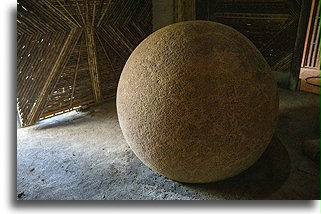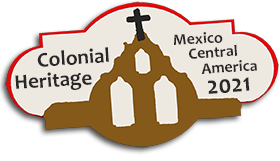Diquís Spheres
November 8
The indigenous people of Costa Rica make up only 2.4% of the population. Among the eight officially recognized tribes, the Boruca are famous for their distinctive wooden masks. In the morning we went to visit their village. From the coast, the dirt road sharply climbed up to a height of 1650 feet / 500 meters. The Boruca village itself is not very interesting. Several houses and one general store. The local communal museum was under renovation but we got to see our first stone sphere. We stopped at two local art galleries of course, Masks were new, carved and colorful painted as typical souvenirs. The art they sell here has evolved too much on the verge of kitsch.



To see more stone spheres, we went to Palmar Sur. Many of them are easy to spot. It is a bit weird to see pre-Columbian art in a public park in a small village. Each of the spheres is different in size, but all look almost perfect in their roundness. It is clear that all of them were moved from their original locations, but Palmar Sur and surrounding area is where most of them were found. Stone spheres have became a symbol of national identity in Costa Rica.



To find out more about the mysterious stone spheres, we stopped in Batambal. The archaeological site is where people were active from AD 600 to 1500. Initially it was an ordinary village where stone tools were used, but from AD 800 the site was used for ceremonial activities. It was then that rock platforms built, stone spheres and other sculptures were carved.



The Diquis peoples lived in this region until the arrival of Europeans in the 1530s. The Diquis culture associated with stone spheres disappeared after the Spanish conquest. Little is known about them or the stone spheres they created. Archaeological evidence at Batambal suggests that most of the stone sculptures, including spheres found here, were broken symbolically as part of ceremonies and rituals.



From Batambal we drove towards Panama. After the typical two hours spent on endless paperwork and walking between different counters, we crossed the border. At 8 pm, after another three hours on the road we reached La Isleta, very nice and safe place to spend a night.











